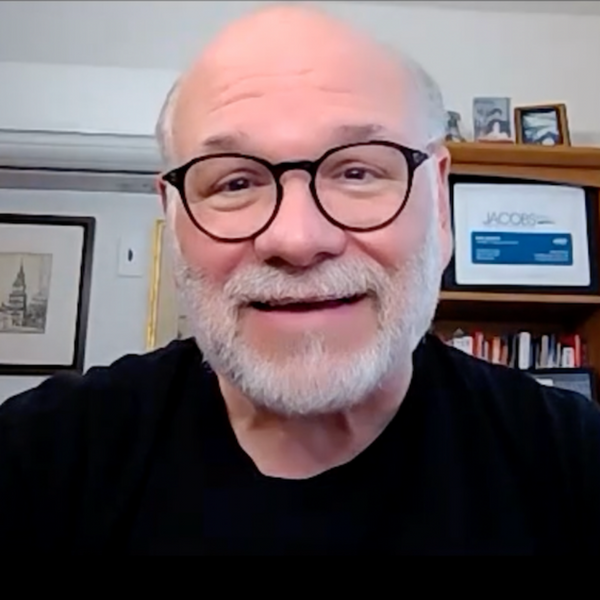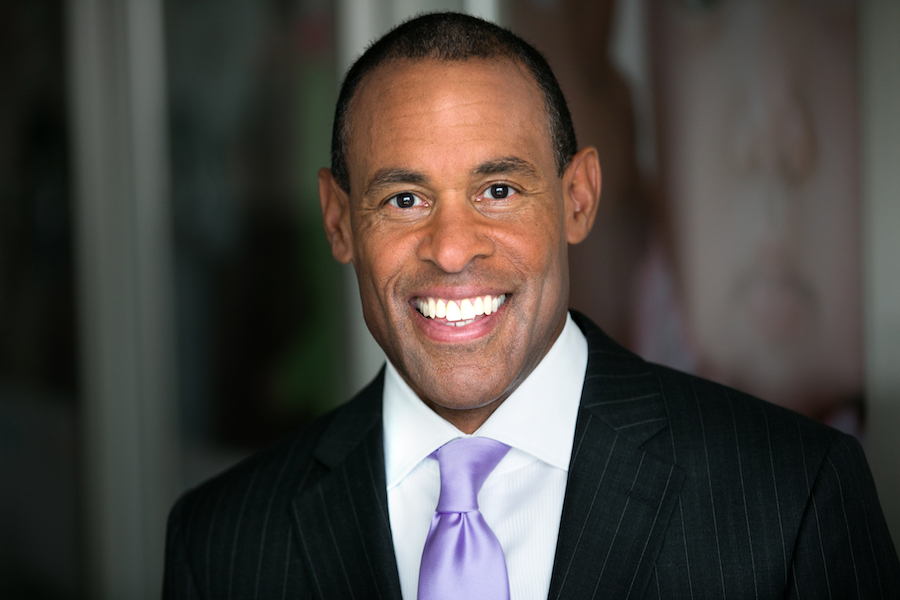J&J's Global CCO on Leading With Humility
By Ken Jacobs
June 2020
Michael Sneed joined Johnson & Johnson in 1983 as a marketing assistant. Through the years, he has held positions of increasing responsibility within several company divisions. Today, Sneed is EVP of global corporate affairs and CCO of Johnson & Johnson.
“Leadership is a great privilege and a great responsibility, but it’s important to not lose sight of what inspires you,” he said. “When you have a sense that you’re part of something special, you’re going to do your best work. This is true whether you’re just starting out in your career or you’ve been part of the same organization for 25 years or more.”
Sneed talked with me more about his leadership views as well as thoughts on diversity and inclusion in the profession.
What are the leadership guideposts that have served you well?
Effective leaders need to build from a position of trust and respect. You need to trust and respect others and, in turn, work to earn theirs over time. This, to me, is foundational and true no matter what level or role you play in an organization — whether it’s a 140,000-person company like Johnson & Johnson or a 10-person startup.
Leaders must know and understand the business at both a functional and a strategic level. Of course you can never know every detail, but you need to have a strategic sense of what’s important across the enterprise, what future success looks like and how your organization can provide value toward those goals. As communicators, we wear multiple hats. Our mindset should be to act as a businessperson first, communicator second.
Leaders must also continually listen to — and learn from — those around them. Change is constant. The best leaders keep their ear to the ground, regularly speaking with consumers, customers, employees and other stakeholders to surface new insights and watch for shifting perspectives. They read, stay curious and look to learn from companies and industries outside of their own.
Establish your vision of success while giving people agency to do what they do and utilize their own personal strengths — knowing where to set the agenda and where to give people the freedom to lead.
Great ideas come from people in all roles, levels and locations. Having a clear and integrated global strategy while allowing for local customization, particularly when it comes to execution, is key. It means staying humble and leading with humility, with a sense that you don’t have all the answers.
Communicators of color are underrepresented at the senior level. What must the profession do to address this critical issue?
We’re talking about a very large and complex challenge that no single lever will solve. I’m encouraged that most modern organizations today are prioritizing diversity and inclusion and see themselves as part of the solution. Slowly, over time, that will help shift the talent market in a better and more diverse direction.
But the greatest impact will come from those organizations that understand and work to seize the business advantages of building diverse, welcoming teams.
For these organizations, D&I isn’t a “nice to do” — it’s a business imperative. They will help the marketplace move a lot further, faster.
One of the things that most excites me is the opportunity we have to leverage current and future technology in education. This, to me, has the potential to be a real game changer because it can take some of the pressure off our classroom teachers and give them new tools to open up a world of opportunities to students in a compelling and visceral way.
At a more granular level, I think it is difficult to overstate the importance of individual mentoring and friendship. One person can make an incredible difference in the lives of individual students. This is true not only in high school and college, but also in grade school and middle school. In the professional world, collaborating with young people remains an indispensable part of how we grow and advance diverse talent. Of course, mentoring isn’t a new idea, but it remains as relevant as ever.
In your current role at J&J, you’re leading experienced communications professionals as well as influencing those in related disciplines. What’s your approach?
Start by establishing clear goals, expectations and roles. In addition to our shared vision and strategy, last fall, we introduced a new competency model for our 600-person organization to define expected behaviors across the team.
The type of team you establish, as well as team dynamics you foster, are also critical. As a leader, don’t surround yourself with people who think or work like you. Instead focus on building a diverse team of people who have various and complementary strengths. Differing perspectives can of course make things a bit more challenging, but have been proven to result in stronger ideas and outcomes.
How has J&J been responding to the COVID-19 crisis?
The COVID-19 pandemic has proven the importance of effective communication, and the extent to which it can guide people through change and build stronger relationships with stakeholders.
We’re in the health-care business, so we can — and are — doing a lot to help mitigate and ultimately end the pandemic. Between accelerating the development of a vaccine, continuing to supply our medicines, devices and products to those who depend on them, and supporting those on the frontlines, we have great stories to tell. The pace, scale and sheer complexity of this crisis have pushed our team to exemplify our best every day.
Employee communications have been a major focus area. We’ve been sharing updates on restrictions, health and safety, new policies and company relief efforts with our 135,000 people weekly — sometimes every two-to-three days.
Externally, we’re keeping stakeholders informed of efforts toward progress in the fight, including our “Road to a Vaccine” series hosted weekly by Lisa Ling.
It has been an all-hands-on-deck crisis. I’m proud of the one team mindset and approach we’ve taken to our communication efforts. We’re working across old boundaries — internal vs. external, digital vs. traditional, corporate vs. business unit — to show up collectively as Johnson & Johnson in everything we do.
Do you have anything else to add about leadership?
I wake up every day with a passion for sharing our story because I believe in the inherent worth of what we’re doing to change the trajectory of health for humanity. If you believe in the broader purpose and you’re motivated to make progress, you’re going to find much more satisfaction and fulfillment.
I’m fortunate to have had a long and enjoyable career with a company I believe in and respect, and I wish the same for your readers. If you don’t love what
you do and who you’re doing it for, you should look for an opportunity to change.
Life is just too short and too precious to be stuck putting your time and talents into something you’re not passionate about and don’t wholeheartedly believe in.



